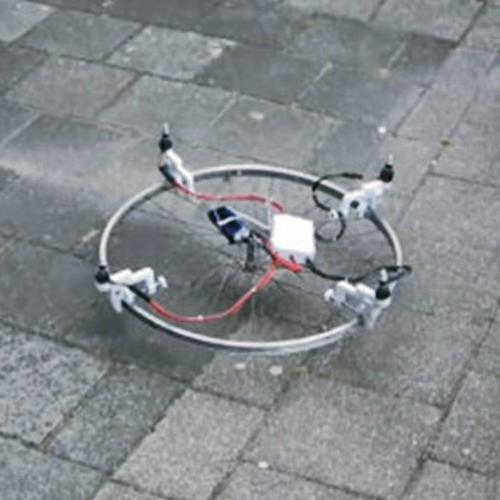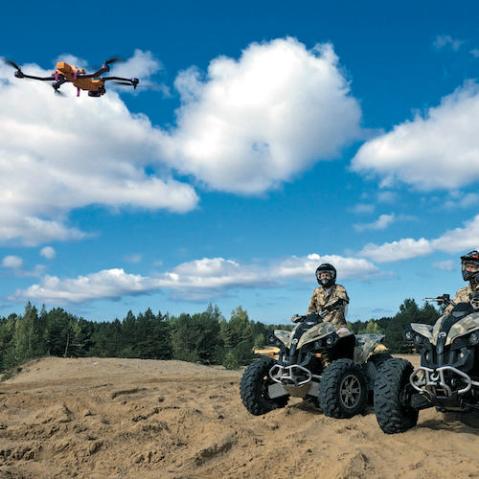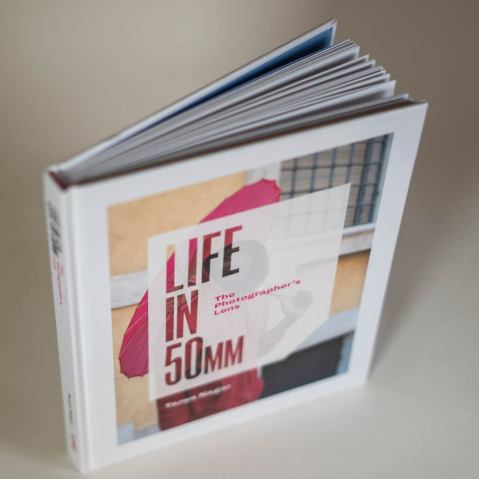Build your own drone

For the ultimate design flexibility, the only choice is to build your own drone.
By choosing your own components and attaching them to an airframe of your choice (or your own devising) you can create anything from a super-quick stunt ‘copter to a stable, heavy-lift platform.
Building your own multicopter requires you to select components that will work together, connect them up, and perform any necessary setup before you are ready to fly. This sounds simple, but there is some complexity in the process—ensuring components will work together well requires a certain amount of research; the set-up can often involve quite fiddly computer software; and you’ll need to master the art of soldering.
In exchange for the extra effort you’ll be able to make something you can be proud of. Not only that, but there’s no need to spend all your money at once. You can build a basic airframe, for example, and then when you can afford it, you can add a camera and then, later, perhaps a sophisticated gimbal to stabilise the camera for top-notch video. Other additions you can make later include devices to relay flight information (telemetry) back to the ground, or perhaps even live video.
At the other end of the invisible tether, you can also make changes to your controller over time, starting out with the basic channels you need to get airborne and then add attachments to receive video and view live telemetry at a later date, or add similar receivers to your computer if you prefer.
 The Skytanic
The Skytanic
The author’s first hexacopter, built using an assortment of mail-order parts including a DJI NAZA flight controller and a Tarot 680 airframe. Pipe insulation around the thin carbon fibre landing struts does a lot to cushion landings.
Along with the advantages of flexibility and the ability to spread costs over time, self-building can be a really enjoyable way to pick up some useful practical skills, or a fun way to share them with a family member. When you get to fly something you built yourself, learning about electricity and developing your soldering skills is a lot more rewarding!
The downside is the uncertainty — there’s a reason why so many people find Apple’s “it just works” approach to computing far more appealing than purchasing a variety of components to assemble themselves! If that sounds like you, then you will likely be happier with the likes of DJI, which strives to make its consumer ’copters flight-ready straight out of the box.
 Turnigy Micro-X
Turnigy Micro-X
Not all kit drones are large — the Micro-X can rest on the palm of your hand and the circuit board forms the airframe. The kit includes motors, props, and batteries, but requires assembly.
There is a middle ground, however. Many resellers have taken the time and energy to devise packages that include all of the necessary components to build different ’copters. With one simple order you’ll get everything you need. It will still be delivered as a box of boxes (and probably with different instructions from different companies),but you have the certainty that the components in question will work together: the motors and props will provide the correct amount of lift without burning out, for example. Better still, you’ll often get a discount against the price of buying the components individually.
The Complete Guide to Drones is Adam Juniper’s comprehensive introduction if you’re thinking of dipping your toe into the world of drones. This book will show you everything you could need to know. What types you can buy (or build), how they work, how to fly them, all the relevant rules and how to keep ahead of the weather.
 The Complete Guide to Drones
The Complete Guide to Drones
Adam Juniper
Buy it now!
RRP for print edition: £14.99





